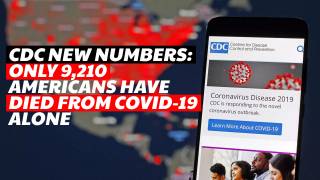9 Reasons Why PolitiFact Is Unqualified to Label ‘Fake News’
Left-leaning PolitiFact is on the newly revealed list of “fact checking” organizations Facebook will reportedly use to label “fake news” stories as they appear on the social media platform.
“We’ll use the reports from our community, along with other signals, to send stories to these organizations,” Facebook VP Adam Mosseri wrote in the Facebook news blog. “If the fact checking organizations identify a story as fake, it will get flagged as disputed and there will be a link to the corresponding article explaining why.”
Facebook’s decision to tout PolitiFact as a credible and independent fact checker is awfully disturbing, given the organization’s repeated smear campaign against Donald Trump throughout the 2016 election.
Facebook’s “fake news” flaggers, Politifact, et al., have a history of showing sympathy for left-wing narratives. Time and again PolitiFact published stories that favored Hillary Clinton’s candidacy, while promoting “fact checks” meant to rebut or embarrass Republicans.
Below is a list of the many instances proving why Politifact is completely unqualified to be an objective judge of what’s real and “fake” news.
1. Last March, PolitiFact delivered a “mostly false” rating for a joke made by Republican Senator Ted Cruz.
2. Last April, PolitiFact made phone calls and sent a reporter to investigate whether Governor Scott Walker actually “paid one dollar for” a sweater he bought at Kohl’s. PolitiFact later ruled Walker’s claim “true.”
3. When Trump said Clinton wants “open borders,” PolitiFact deemed his statement “mostly false” — despite the fact that Clinton admitted as much in a private, paid speech to a Brazilian bank on May 16, 2013. “My dream is a hemispheric common market, with open trade and open borders,” she said at the time.
4. PolitiFact cast doubts on comments Pat Smith made during her emotional speech at the Republican National Convention, where she said Hillary Clinton said “a video was responsible” for her son’s death during the terror attacks in Benghazi.
Smith was referring to when she “saw Hillary Clinton at Sean’s coffin ceremony,” and then-Secretary of State Clinton “looked me squarely in the eye and told me a video was responsible.”
But PolitiFact, taking an oddly defensive stance, said Smith’s memory could’ve been “fuzzy” and referred its readers, instead, to a “brief meeting behind closed doors” where Clinton addressed the families of the victims of the attack.
5. Despite video evidence to the contrary, PolitiFact claimed Hillary Clinton didn’t laugh about Kathy Shelton’s rape as a child. Trump invited Shelton to the second presidential debate and called out Clinton’s embarrassing behavior.
Again, moving to dismiss and downplay Clinton’s actions, PolitiFact wrote: “Trump is referring to an audio tape in which she does respond with amusement at her recollections of the oddities of the case, which involve the prosecution and the judge. At no point does she laugh at the victim.”
6. In an attempt to explain Hillary Clinton’s role in the sale of 25 percent of the United States’ uranium stockpile, Politifact ignored numerous key facts, downplayed other key facts, and ultimately made 13 errors in its analysis.
7. A few months later, PolitiFact was, again, attempting to whitewash Clinton’s role in the Russian uranium deal. Like PolitiFact’s first foray into the subject, the second report commits many factual errors and is full of glaring inaccuracies and omissions.
8. During a televised campaign event, Clinton said Australia’s compulsory gun buyback program “would be worth considering” in the U.S.
When the National Rifle Association included Clinton’s comments on one of its flyers, PolitiFact ruled the organization’s claim “mostly false.”
9. While Politifact admitted that Trump’s claim that Russia’s arsenal of nuclear warheads has expanded and the U.S.’s has not, the left-wing outfit deemed Trump’s statement “half true.”






















